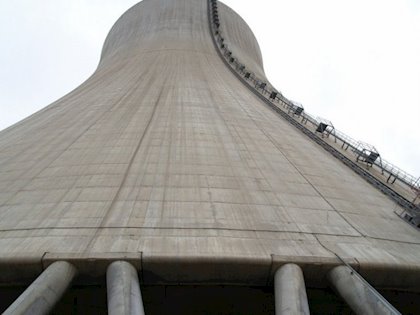Large infrastructures and buildings, such as nuclear power plants, carry with them the need to verify the status of certain concrete structures in order to ensure their structural integrity. Although specific standards are currently being drawn up for this purpose, a need is foreseen for the development of inspections capable of detecting possible discontinuities, controlling them and evaluating them following their repair or, if a concrete in perfect condition is detected, declaring it to be suitable and extending its lifetime.
Non-Destructive Testing (NDT) is an area of materials science that uses non-invasive techniques to determine the integrity of a multitude of components, such as concrete (component or complete structure), in addition to allowing for the measurement of certain of their characteristics.
What can be controlled with Non-Destructive Testing?
The objectives of NDT are to determine the properties of materials, detect discontinuities in them and characterise, locate and dimension such discontinuities in order to determine whether they are in fact internal flaws. As a result, it is possible to determine the quality of a component or structure during manufacturing or in service.

Non-Destructive Testing methods may be used to assess the strength, density and quality of concrete, locate and characterise voids and cracks, locate metallic frameworks and study their condition, evaluating their depth of coverage.
What NDT methods are used in concretes and for what applications?
Set out below is a summary of the main NDT methods used in the inspection of concrete structures and their applications:
| Testing method and principle | Applications |
| Visual: observation, classification and documentation of the appearance of degradation on the exposed surfaces of structures. | Mapping of cracking, flaking, incrustations, erosion or construction defects. |
| Acoustic: based on the elastic propagation of waves in solids. | Location of different defects in concrete, such as cracking, voids, delamination and anomalies. |
| Ultrasonic: measurement of the time of flight of an ultrasonic wave passing through the material or analysis of the echo reflected in the structures. | Verification of concrete quality. Location of defects such as cracking, voids, delamination and anomalies. |
Nuclear and radiographic: based on interaction between high energy electromagnetic radiations and the material inspected. |
Location of reinforcing frameworks, ducts, voids and areas of different density. |
| Electromagnetic: based on the propagation and diffusion of low level electromagnetic energy. | Location of metallic inserts, voids, areas of high humidity and anomalies. |
Infrared thermography: uses theories of heat transmission and measures surface temperature differences. |
Location of delamination in sub-surface areas and pockets of moisture. |
Chemical: based on measurement of the chemical components of the structure. |
Identification of corrosion in reinforcing networks and degradation of the matrix caused by carbonation and the presence of chlorides. |
Magnetic and electrical: based on the interaction of electrical or magnetic fields with the metallic structures of the concrete. |
|
The chemical, magnetic and electrical methods are used exclusively to study the degree of degradation of metallic reinforcing frameworks, while the rest are used to study the cement and mortar matrix, although information may also be obtained on the position of the frameworks.
Can Tecnatom help to extend the lifetime of concrete structures?
Tecnatom currently possesses several NDT inspection systems, based on a number of different methods, capable of responding rapidly to service requests and carrying out preventive maintenance tasks, thereby allowing pathologies to be mitigated in their early stages.
Among our NDT inspection capabilities for concrete are visual inspection (direct or remote by means of drones), hardness testing, different ultrasonic methods, thermography and geo-radar.
Consequently, Tecnatom has an integrated working setup designed to cover a wide range of activities:
- Initial study of concrete structure and its problems
- Inspection by means of optimum NDT methods
- Technical advisory services, technological surveillance and operational monitoring
- Customised repairs and solutions
Authors: Amador Sillero, Covadonga Garcia






